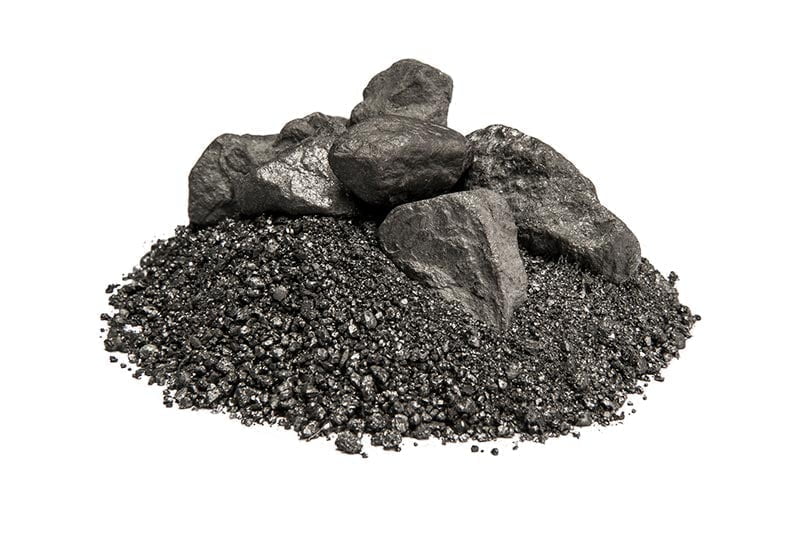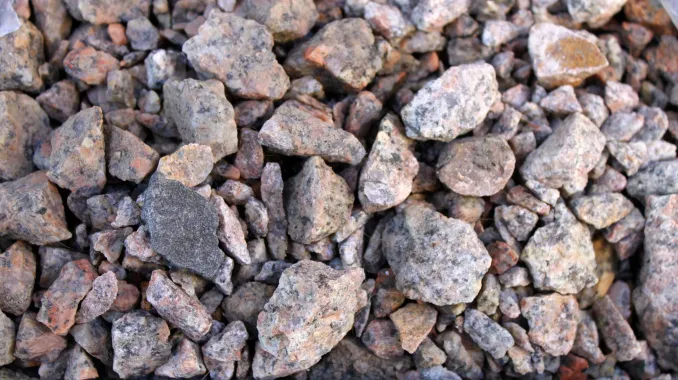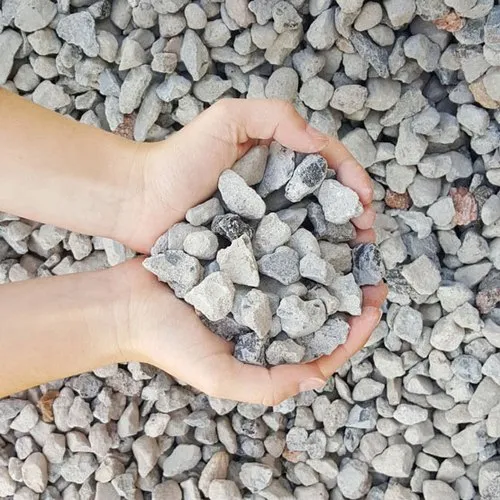The density of aggregate, measured in kilograms per cubic meter (kg/m³), varies depending on the type of aggregate used.
Generally, the density ranges from about 1,000 kg/m³ to 2,900 kg/m³. For example, gravel typically has a density of around 1,500 kg/m³, while sand can range from 1,700 kg/m³ to 2,000 kg/m³. Dense aggregates like granite may have densities closer to 2,900 kg/m³.
Having knowledge of aggregate density is necessary in construction because it influences the strength and stability of structures. By knowing the density, builders can ensure they use the right type and amount of aggregate for different projects, ensuring safety and durability.
How density is measured (kg/m³)?

Density is typically measured in kilograms per cubic meter (kg/m³). To find the density of aggregate, we weigh a certain amount of aggregate and then measure the volume it occupies.
By dividing the mass (in kilograms) by the volume (in cubic meters), we get the density in kg/m³. This measurement helps engineers and builders understand how much a certain volume of aggregate weighs, which is vital for deciding if it’s suitable for different construction jobs.
What factors affect the density of aggregate?
Imagine you have a big pile of gravel for construction. The weight of that pile depends on how tightly packed the gravel pieces are, not just how many pieces you have.
This tightness, measured in kilograms per cubic meter (kg/m3), is called the density of the aggregate. Here’s how some things can affect how much your gravel pile weighs
Type of aggregate material
The type of aggregate material used plays a significant role in determining its density. Different types of rocks and minerals have varying densities due to their composition and structure.
For example, granite is a dense rock with high density, while limestone tends to have lower density. Other factors such as porosity and mineral composition also influence the density of aggregate materials.
Builders must consider the type of aggregate material carefully to ensure that the density meets the requirements of the construction project.
Particle shape and size
The shape and size of aggregate particles have a direct impact on their density. Irregularly shaped particles tend to have more air voids between them, resulting in lower density compared to uniformly shaped particles.
Similarly, larger particles have fewer contact points and air voids, leading to lower density compared to smaller particles. Builders often use grading and screening processes to control the particle size distribution and shape of aggregate, optimizing density for specific construction applications.
Moisture content
Moisture content is another critical factor influencing the density of aggregate. When aggregate particles contain moisture, they occupy more space, resulting in lower density.
Conversely, dry aggregate particles are more compact and have higher density. However, excessive moisture content can lead to problems such as reduced workability and increased susceptibility to freeze-thaw cycles.
Builders must carefully manage moisture content during the production and placement of aggregate to achieve the desired density and ensure the quality of construction materials.
Compaction methods
Compaction methods play an important role in achieving the desired density of aggregate in construction projects. Compaction involves applying mechanical force to reduce air voids and increase the density of aggregate materials.
Various compaction techniques, such as vibratory rollers, pneumatic tampers, and static pressure, can be used depending on the type of aggregate and project requirements.
Proper compaction ensures uniform density throughout the construction material, enhancing its strength, stability, and durability.
Builders must carefully select and implement appropriate compaction methods to achieve optimal density and ensure the long-term performance of the structure.
What are the typical density ranges for different types of aggregate?

The typical density ranges for different types of aggregate vary depending on factors such as particle size, shape, and composition. Here are the general density ranges
Gravel
Gravel is a common type of aggregate composed of small rock fragments. It is typically produced by crushing larger rocks and can vary in size from fine particles to larger pebbles.
The density of gravel typically ranges from about 1,500 kg/m³ to 1,800 kg/m³. Gravel is widely used in construction for applications such as road base, drainage systems, and landscaping.
Sand
Sand is a granular material composed of finely divided rock and mineral particles. It is often found in riverbeds, beaches, and desert environments.
Sand particles range in size from very fine to coarse, depending on the source and processing methods.
Generally, the density of dry sand ranges from about 1,500 kg/m³ to 1,700 kg/m³. However, wet sand or sand with high levels of fine particles may have lower density.
Sand is commonly used in construction for concrete, mortar, and bedding materials.
Crushed stone
Crushed stone is produced by crushing larger rocks into smaller pieces. It is commonly used as a base material for roads, driveways, and foundations.
Crushed stone comes in various sizes, ranging from fine dust to larger stones, and can be made from different types of rock, including limestone, granite, and basalt.
The density of crushed stone varies depending on the type of rock and crushing process used. On average, crushed stone has a density ranging from about 1,600 kg/m³ to 2,000 kg/m³. Dense aggregates like granite tend to have higher density, while softer rocks like limestone may have lower density.
What are the standard procedures for measuring aggregate density?
There are two main properties related to the density of aggregates. They are bulk density test and specific gravity test
Bulk Density Test
This method involves measuring the mass of a known volume of aggregate. The volume is typically determined by filling a container, such as a cylindrical metal measure or a box, with the aggregate sample.
First, the container is filled with the aggregate in three layers, each layer being compacted using a standard tamping rod to ensure uniform packing.
After filling the container, any excess aggregate is struck off using a straight edge to ensure a level surface.
The filled container is then weighed using a balance or scale that is accurate to the nearest gram.
The bulk density of the aggregate is calculated by dividing the mass of the aggregate by the volume of the container. This gives the mass of aggregate per unit volume, typically expressed in kilograms per cubic meter (kg/m³).
The bulk density test provides a measure of how densely packed the aggregate particles are within a given volume, which is important for understanding its overall characteristics and suitability for various construction applications.
Specific Gravity Test
The specific gravity test determines the density of an aggregate relative to the density of water. This method is based on Archimedes’ principle, which states that an object immersed in a fluid will experience an upward buoyant force equal to the weight of the fluid displaced.
To perform the specific gravity test, a known volume of water is weighed, and its mass is recorded. This provides the reference mass for calculating specific gravity.
The aggregate sample is then submerged in water and weighed while fully submerged. This measurement is known as the apparent mass of the aggregate.
The specific gravity of the aggregate is calculated by dividing the apparent mass of the aggregate by the mass of the same volume of water. This ratio represents the relative density of the aggregate compared to water.
Finally, the specific gravity is multiplied by the density of water (typically 1000 kg/m³) to obtain the density of the aggregate in kg/m³.
The specific gravity test provides a measure of the density of the aggregate relative to water, which is useful for determining its composition and porosity. It is commonly used in conjunction with other tests to assess the quality and suitability of aggregates for construction purposes.
FAQ
What is the density of 20 mm aggregate in kg m3?
The density of 20 mm aggregate is usually between 1400 kg/m³ and 1700 kg/m³. It depends on how the rocks are shaped, sized, and packed together.
What is the density of wet aggregate in kg m3?
When aggregate is wet, it’s heavier because of the water in it. So, its density can be lower than when it’s dry.
What is the density of 40 aggregate?
The density of 40 mm aggregate can vary but usually falls between 1400 kg/m³ and 1700 kg/m³. It depends on what the rocks are made of and how tightly they’re packed.
What is the density of aggregate m3?
The density of aggregate per cubic meter (m³) can vary, usually between 1400 kg/m³ and 1700 kg/m³. It depends on the size, shape, and moisture content of the rocks.
What is the density of 30mm aggregate?
The density of 30 mm aggregate is typically between 1400 kg/m³ and 1700 kg/m³, similar to other sizes. It depends on how the rocks are packed and what they’re made of.
What is the dry density of aggregate?
Dry density is how heavy aggregate is without any water in it. It usually falls between 1500 kg/m³ and 1900 kg/m³. It depends on the type of rocks and how tightly they’re packed.
What is the density of aggregate in kg CFT?
The density of aggregate in kilograms per cubic foot (kg/CFT) can vary, generally between 75 kg/CFT and 95 kg/CFT. It depends on the size of the rocks and how compact they are.
Final thoughts
Knowing how heavy the materials are in construction is important. It helps builders pick the right ones and make sure they’re packed well. Different materials like gravel, sand, or crushed stone have different weights. This affects how strong and stable buildings and roads are.
By choosing the right materials and packing them well, builders can make things safer and longer-lasting. So, when you see those small rocks in construction, remember, how heavy they are makes a big difference!



